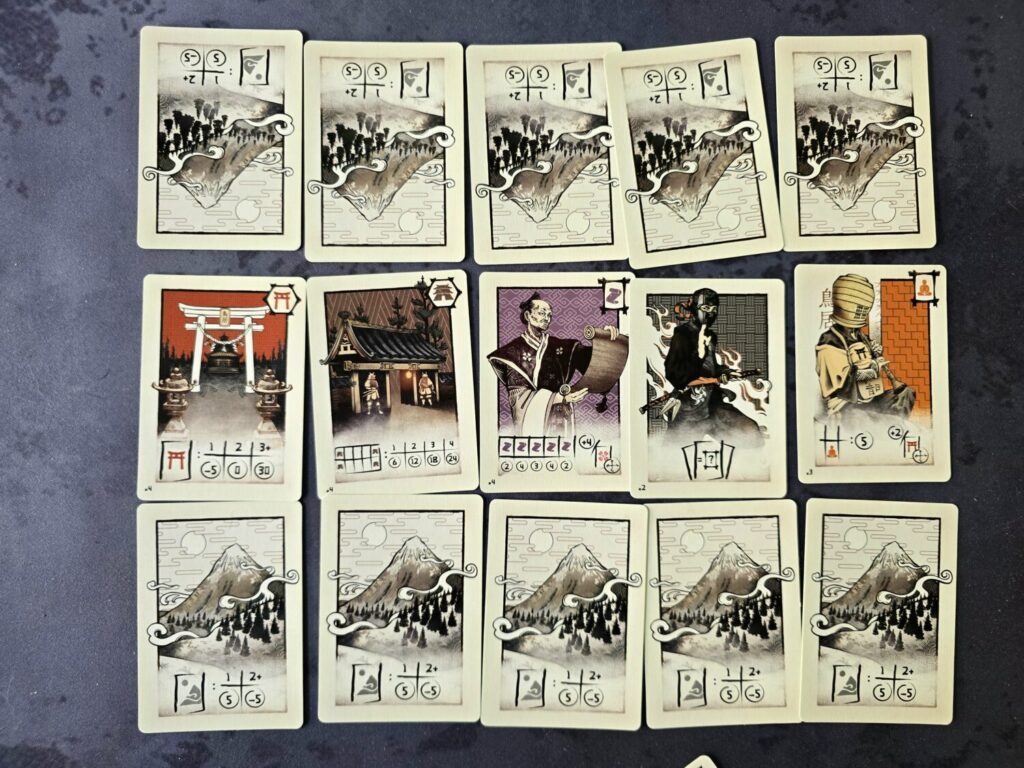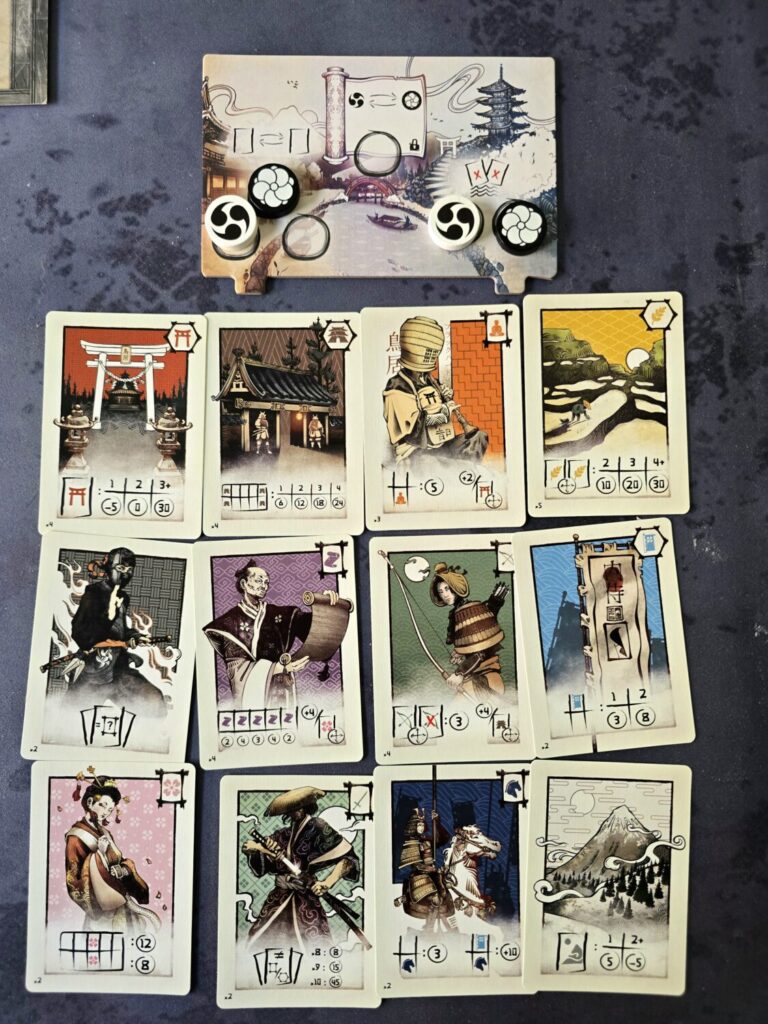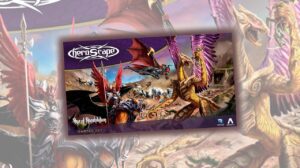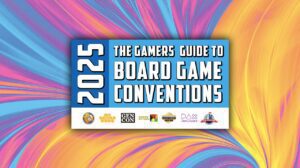Disclosure: Meeple Mountain received a free copy of this product in exchange for an honest, unbiased review. This review is not intended to be an endorsement.
Honor in Victory, Shame in Defeat
In a tumultuous year of tariff uncertainty, the focus has shifted to small card games thanks to their lower printing costs and quicker turnaround. As always, I’m on the hunt for small, quick two-player games I can enjoy with my wife that aren’t dueling titles or TCGs. Cue up Naishi, a quaint little box featuring gorgeous feudal-style art from Marine Losekoot and designed by French creators Mathieu Bieri and Alex Fortineau.
Walking by, the game looks unassuming: just rows of cards, a deck, and a small sideboard. The minimalist design doesn’t scream for attention, but the subtle pops of color in the artwork certainly do. Thematically, players are working to optimize their feudal state through a delightful dance of card cycling and positioning akin to Boreal, Elawa, and Odin.
After my first play with fellow Mountaineer Justin Bell, I was surprised to learn the game is also available on Board Game Arena—further fueling the question of whether we should even bother buying physical games anymore.

The Way of the Cards
Players aim to build the highest-scoring ten-card tableau, all while managing hidden information. Each player has a visible “line” of five cards and a hidden line in hand. Between them lies the river, which acts as the pool from which players draft into their lines.
The land of Naishi features twelve different card types, each with unique scoring conditions based on their position in a player’s tableau. For example, forts score six points if placed in the four corners. Tori gates, on the other hand, are trickier: one gate is worth negative five, two are worth zero, but three or more rocket you up to a whopping thirty points.

On their turn, a player drafts a card from the river but must replace it in the exact same position—either in their line or their hand. Since the card order is static, the puzzle lies in arranging them into the best possible sequence.
As a free action, players can send emissary tokens to the sideboard to manipulate the game: cycle the river, swap two cards, recall emissaries, or even end the game outright if they feel their configuration is optimal. There’s also a powerful one-time action that locks out an emissary for the rest of the game but allows a player to exchange a card with their opponent’s line or hand in the same position. Because it’s so strong, only one player can use it in the entire game.
Play continues until a player ends the game or the draw deck runs out. Scoring is then tallied based on each card’s unique condition.
Swift As the Wind
The tension in Naishi is palpable. While managing your own tableau, you also need to keep an eye on what your opponent is building. With half of their tableau hidden, there’s a constant game of chicken, trying to deduce whether they have the right cards to trigger big scoring combos. The card distribution is public, so card counting quickly comes into play. This is especially critical with builds like the Tori gates, where failing to hit three nets you nothing, or even negative points. Sometimes it’s worth burning an emissary just to use the once-per-game action to yank away a key card from your opponent and ruin their strategy.
The emissary mechanic adds useful flexibility, but it demands careful timing. It takes an entire turn to retrieve an emissary, and with limited spaces, actions can be blocked until someone frees them—adding yet another layer of brinkmanship. And because the game is a race, you can’t afford to lag behind while fussing with perfection.
This elegant dance of drafting and rearranging feels both fresh and intuitive. Rarely have my tableaus ended up the same across two games, and the variety of scoring conditions ensures strong replayability.
That said, the game isn’t without blemishes. With twelve (yes, twelve!) different scoring conditions, it can be tough to keep track of them all. Early playthroughs bogged down as we constantly referenced how certain cards scored. Multiple plays smooth this out, but the initial bookkeeping does drag down what is otherwise a quick and seamless experience.

Nifty Naishi
This nifty little card game caught me by surprise, and I’m shocked there hasn’t been more hype around it. The gameplay feels smooth, and the tactical depth makes every turn rich with choice. While table talk was minimal, the interaction stayed high thanks to the constant educated guesses aimed at disrupting an opponent’s plans.
At around twenty minutes per play, this is one I wholeheartedly recommend checking out. Fast, fresh, and tactically fun, I expect Naishi will be hitting my table (or my phone on BGA) quite often.











